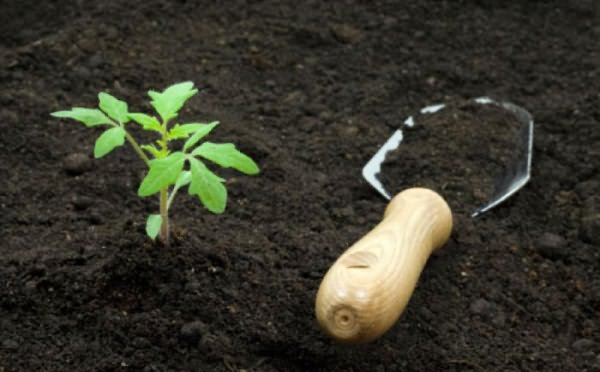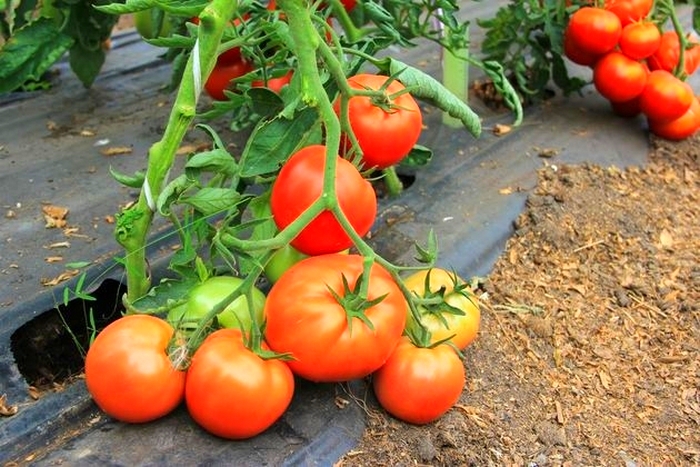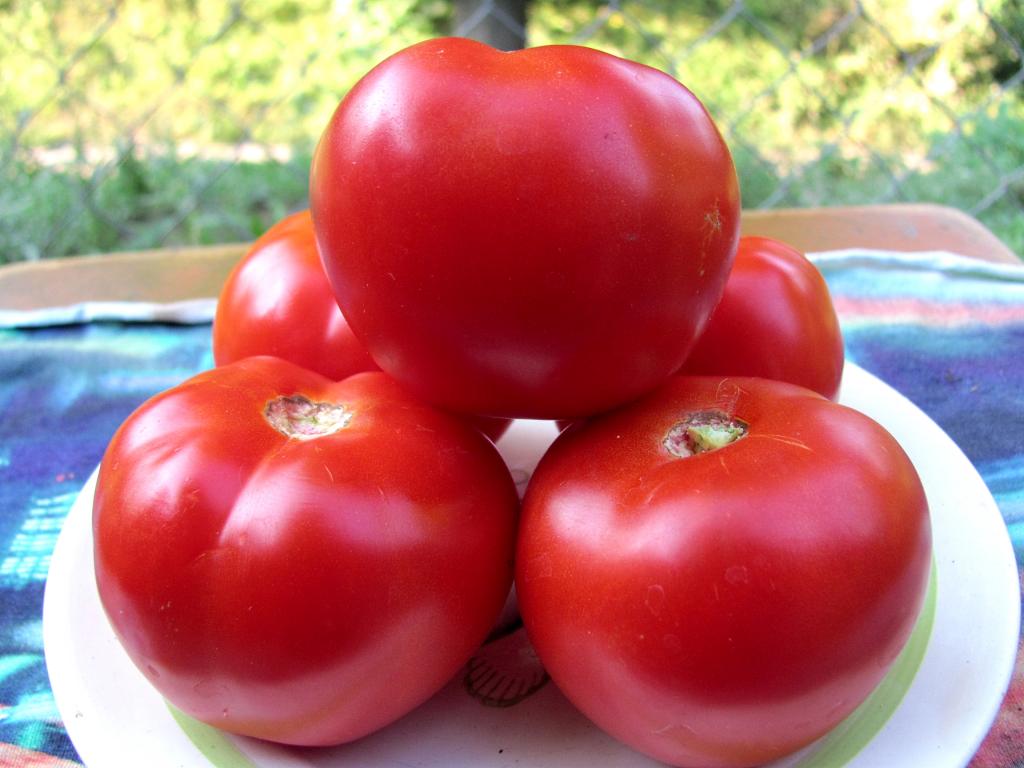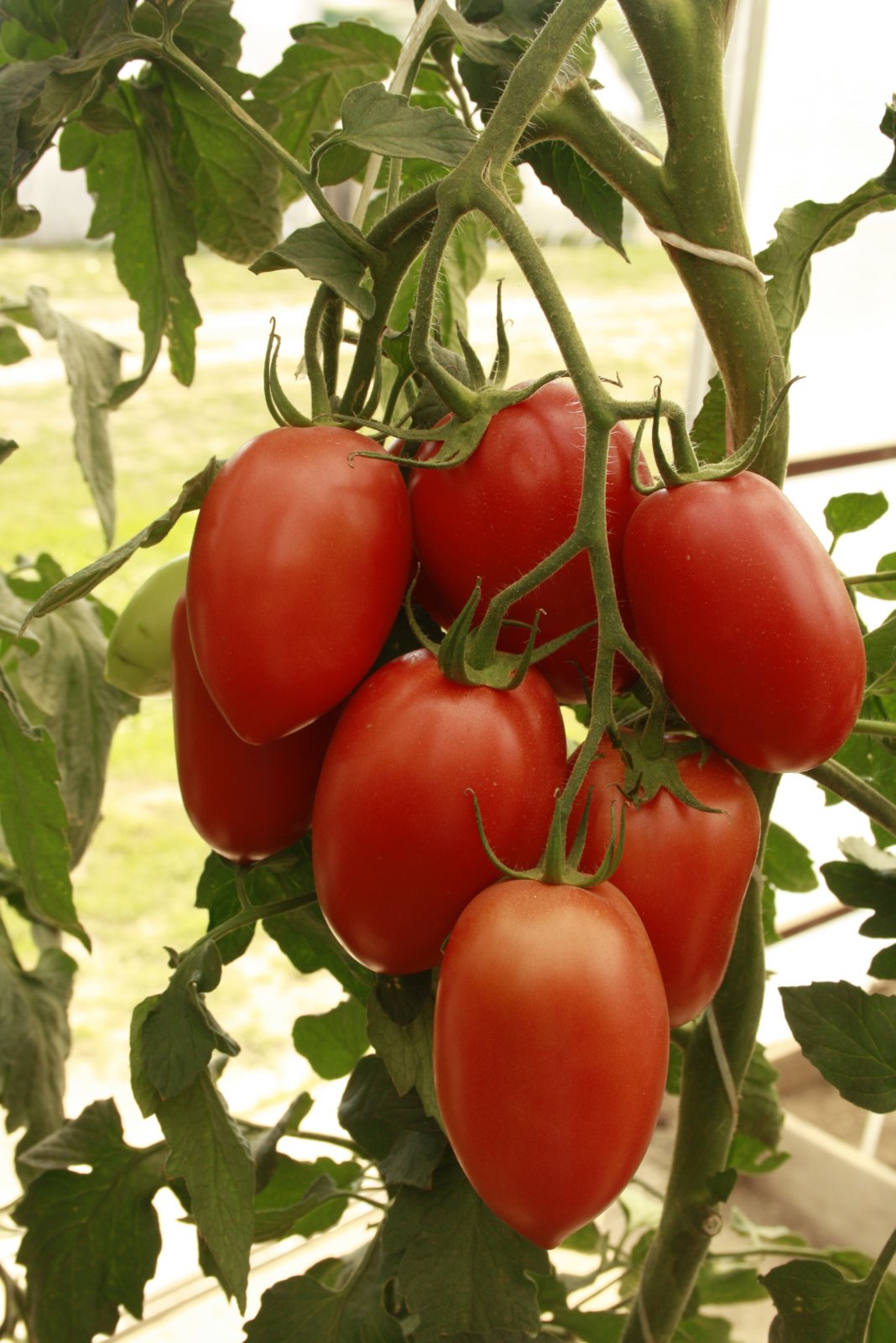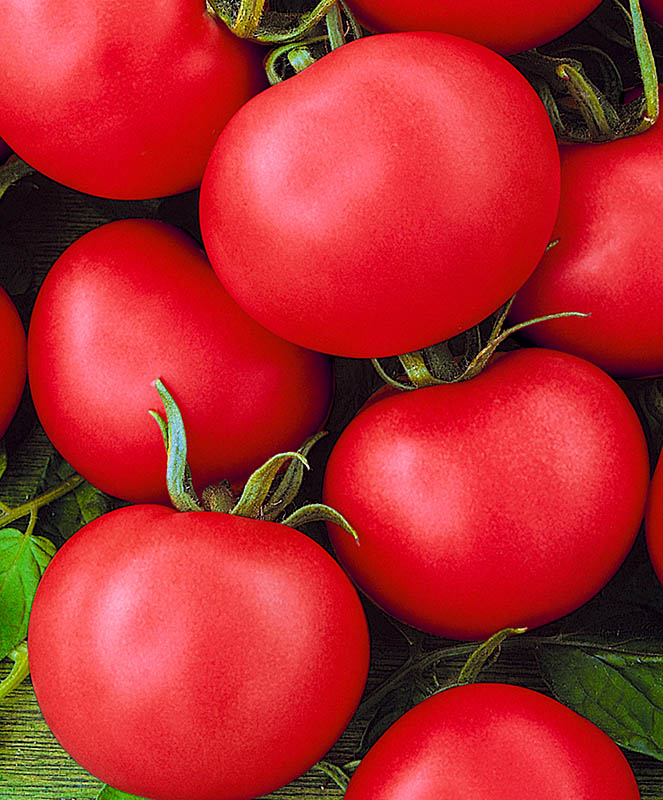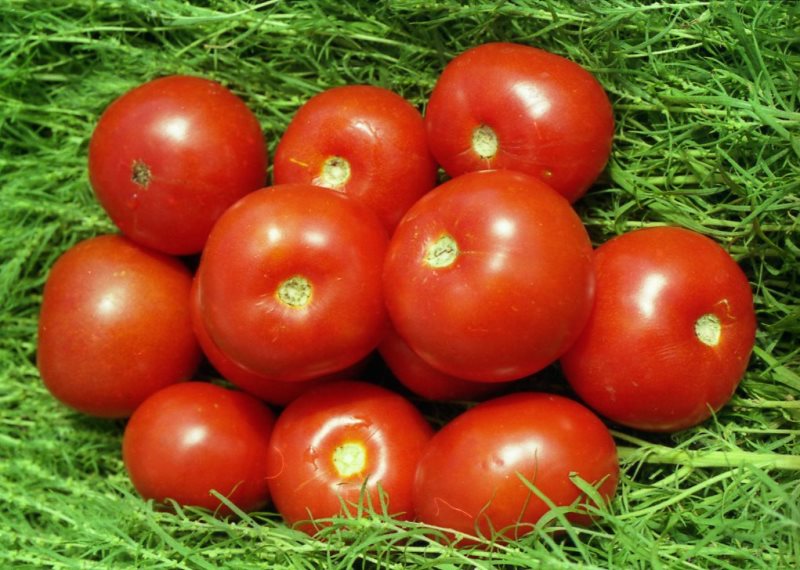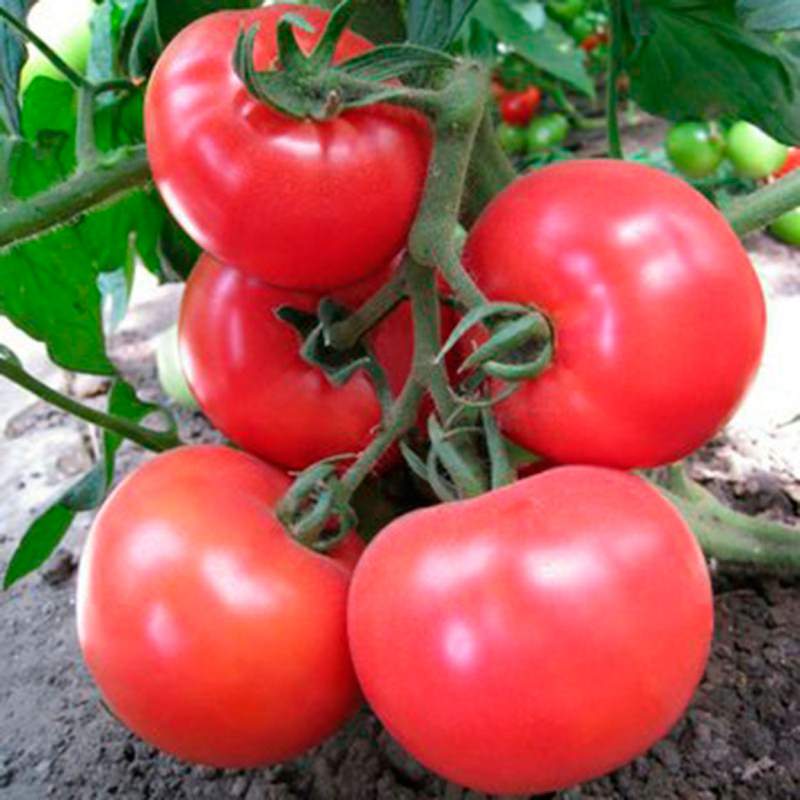Family tomato is an early large-fruited hybrid of Russian selection. Bred by the scientific and production organization of Kirov, entered in the State Register and approved for cultivation since 2007. The quality of the seeds meets the established standards. Suitable for growing in northern regions.
Variety characteristics
The F1 hybrid in the name means that this kind of tomato is obtained by manually crossing two varieties. The best qualities were taken from the original varieties, relatively speaking, “mom” and “dad” and combined in a new form. Thus, germination, yield, resistance to weather conditions and diseases are improved.
Family tomatoes are named for their high yield - 4-7 kg per plant, which is enough for the whole family. Marketable yield - 18.5 kg / sq. m. Fruits are smooth, round, large, weighing one tomato about 200 g. Under favorable growing conditions, the manufacturer declared the maximum weight of one fruit in 350 g. Taste sweet and sour, tomato. The fruits are multi-chambered, therefore fleshy and dense.
Leaves are green, medium in size. The inflorescences are simple. The stems are strong, withstand large fruits well. Excellent fruit set is observed, with a small proportion of barren flowers.
Tomato Family characteristics and description of the variety indicate its purpose for planting in greenhouses and open field.
Ripening occurs 115 days after full germination.
A tomato of determinant type of growth, means that the stem is undersized, up to 1 m high. The top ends with the last flower cluster, on which the fruit is later formed, and growth ends. Further development takes place in the stepsons located below. Therefore, it is important not to rip off the top so as not to be left without a crop. Tomatoes of this type of growth form 2-3 stems.
The family tomato is well suited for fresh salads and homemade pickles. It will not be suitable for making juice because it contains more firm pulp with less water.
Agrotechnics of culture
Seeds for seedlings are sown in March-April. It is best not to sow too early so that the seedlings do not subsequently outgrow before they are planted in the greenhouse. This is bad for the yield.
Planting substrate can be purchased at a specialized store or made on your own, it consists of:
- 6.5 kg of peat;
- 2.5 kg sawdust;
- 1 kg of river sand;
- 25 g of lime;
- 300 ml of water.
In order for the elements to have time to interact with each other, they should be prepared in advance, at least 2 weeks in advance. Before planting, the soil is disinfected with preparations or methods of steaming and calcining.
Trace elements are introduced in dissolved form before planting. The prepared soil is poured into a separate box.
Seeds of hybrid tomatoes are planted in separate boxes from varietal tomatoes due to different germination times. For planting, grooves are made in the ground, about 1 cm deep, with a distance between the lines of 4 cm. Sowed at a distance of 1-1.5 cm and covered with earth, lightly pressed. The soil is not watered after planting. Cover the planting boxes with foil to create the necessary conditions: heat and humidity. For germination, the soil temperature should be 25-27 ° C. Sudden changes in temperature are unacceptable.
You can plant each seed in one peat cup or in special cassettes.
Seedlings appear in 7-10 days. The covering film is removed only after more than half of the seedlings have risen, so as not to harm the rest by lowering the temperature. After all the seeds have sprouted, the shelter is removed, the box is placed in a bright place, for the next 4 days, the sprouts should be illuminated around the clock. This can be done using a specially equipped backlight. The temperature is maintained at + 16 ° C for one week. After that, they are grown at a daytime temperature of + 22 ° C, and a night temperature - + 18 ° C, with 12 hours of light during the day.
Home care of the seedlings can involve gentle watering with a needleless syringe, avoiding excess moisture that can lead to root rot.
Picking - transplanting seedlings into a separate, more spacious container, for example, in 0.5 ml cups. Such a transplant is done when several true leaves appear. The container is filled with the same soil in which the sowing was carried out. For a plant, such a transplant is stressful, in order to improve the survival process, the air temperature is increased for several days.
A greenhouse for seedlings is prepared in early May, tomato seedlings are planted 50 days after planting the seeds. The soil is filled with vermicompost.
Low-growing, early-maturing hybrids are planted in the ground according to the 40 * 70 cm scheme, where 40 cm is the distance between the holes, and 70 cm is the distance between the rows, planted in parallel lines.
When the plant reaches a height of 40 cm, it is carefully tied over the fourth leaf.
Tomato Family Stepsons, 3-5 cm in size, are removed during the whole season. The stepchildren are removed by breaking the shoot so that the juice does not fall on the gardener's hand, in order to avoid contamination of other plants if one of them turns out to be unhealthy. Grasshopping does not affect the yield, but enlarges the fruits, due to the supply of nutrients to them, which could pick up the shoots. The absence of unnecessary stepsons is also useful in that the less thickened plant is well ventilated.
Ventilation is necessary for the culture so that condensation does not form, and the humid environment does not contribute to the formation of pathogens that can lead to various diseases. In order not to cut off the fertile brush instead of the stepson, you should know the differences between them. So, the brush with the future harvest begins to grow from the stem, and the stepson - from the leaf axils, leaves begin to peep on the little stepson, and the rudiments of flowers on the brush.
After the fruits have formed, the leaves below the inflorescence are removed. Also, contact of leaves with the ground is not allowed.
Tomatoes grow and develop favorably in a greenhouse at a soil temperature of about 20 ° C, an air temperature in sunny weather - 23-30 ° C. The plant does not tolerate temperatures above these.
In addition to light and heat, Family tomatoes need active, abundant, even watering. In one watering, the earth should be poured onto the bayonet of the shovel, but the plant should not be poured either, so that the root system does not suffocate, and various kinds of fungi do not form. Watered with warm water at sunset. In determinant types of growth, watering is reduced during the formation of ovaries and stops during the phase of fruit formation.
Mineral dressings are useful for tomatoes. They can be produced according to the following scheme:
- On the third day after two cotyledon leaves have appeared, calcium nitrate is added;
- 7 days after the first one is treated with growth stimulants;
- When two pairs of true leaves appear, superphosphate is added;
- 7 days after the previous one, calcium nitrate is spilled;
- When four pairs of true leaves appear, superphosphate is added again.
Several times a season, preventive treatments for late blight are carried out. The first time - a few days before disembarking in open ground.
Mulching with foil, straw or sawdust is useful.
Advantages and disadvantages
The use of the first generation F1 tomato hybrid has the following advantages:
- high productivity;
- increased early maturity;
- equal plant height;
- fruits of the same size within one inflorescence;
- even coloring of tomatoes;
- fruits of high quality, including a high content of the antioxidant lycopene, sugars and dry substances, vitamin C;
- higher plant resistance to diseases and pests, such as rootworm nematode, fusarium, cladosporium.
- adaptability to changing environmental conditions, frost resistance.
Tomato Monsieur f1 description is similar in early maturity, bush shape and fruit with the Family tomato. The only drawback of hybrid tomatoes is that they do not sprout seeds from their own fruit. The peculiarity is that they can only be purchased in branded packaging. Attempts to plant second generation hybrid seeds will lead to the loss of all the best qualities of the tomato and the unpredictability of the result in general. After all, the seeds of the hybrid are obtained through the complex labor of professional breeders.

